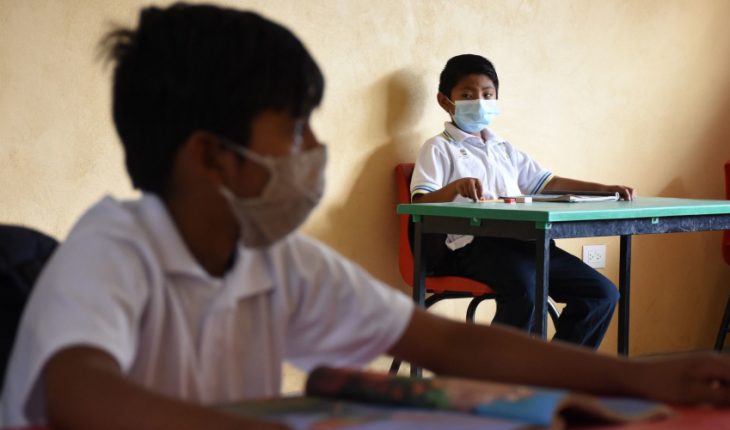In the last five years, the number of Mexicans increased by 74% from 6 to 14 years who do not attend school. While in 2015 3.5% of children were uneded education, by 2020 the number of children in educational lag increased to 6.1%, revealing a comparison of the Social Lag Index 2015 and 2020, of the National Council for evaluation of social development policy (Coneval).
This setback ends with a trend of improvement in this indicator recorded since 2000: that year it was recorded that 8.2% of children under 6 to 14 did not go to school; for 2005 the Coneval reported 5.2%; in 2010 it was 4.7%. 2015 was the last year it recorded a 3.5% drop.
Read: AMLO social programs do not stop poverty gains; 9 million are at risk: Coneval
Three states had the biggest setback in this indicator in the last five years: Chiapas went from 6.9% in 2015 to 10.5% last year. This entity is the highest percentage of minors without basic education.
It is followed by Michoacán from 5.2% to 8% and Guanajuato increased from 4% to 7%.
Another educational indicator is that of the population of 15 years and more with incomplete basic education. Although the percentage of the population in this condition fell from 2015 to 2020, it remains high. Coneval reports that 29.6% of young Mexicans are in this situation. Five years ago there was 35.3%.
Chiapas reappears as the worst performer in this indicator with 48.1% of its population with incomplete basic education.
Followed by Oaxaca (45.2%), Guerrero (42.5%) Michoacán (42.3%).
No social security
In the last five years, the population that is not entitled to a health service was the indicator that recorded the greatest setback. While in 2015, 17.3% of Mexicans did not have social security, by 2020 it increased to 26.2%.
Find out: 7% of localities in Mexico have high social lag; these states are the most affected
Michoacán is the state with the worst percentage with 37.6% of its population without right- It is followed by Chiapas with 32.7%; State of Mexico with 33.4% and Tabasco with 31.4%.
The best performing state in this indicator is Chihuahua where only 15.3% of its population is not entitled to a health service.
The states that improved
Over the past five years, four states remained at a very high level of social lag, with no improvements in indicators. These are: Chiapas, Guerrero, Oaxaca and Veracruz.
Three entities improved their lag grade: Campeche went from high to medium; Guanajuato from medium to low and Yucatan changed from a high lag to a medium one. To measure social lag, the Coneval takes into account indicators of educational lag, access to health services, basic housing services and household goods at the state, municipal and locality levels.
What we do at Animal Politics requires professional journalists, teamwork, dialogue with readers and something very important: independence. You can help us keep going. Be part of the team.
Subscribe to Animal Politics, receive benefits and support free journalism.#YoSoyAnimal
translated from Spanish: Between 2015 and 2020, the number of children who do not go to school rose 74%
April 27, 2021 |





